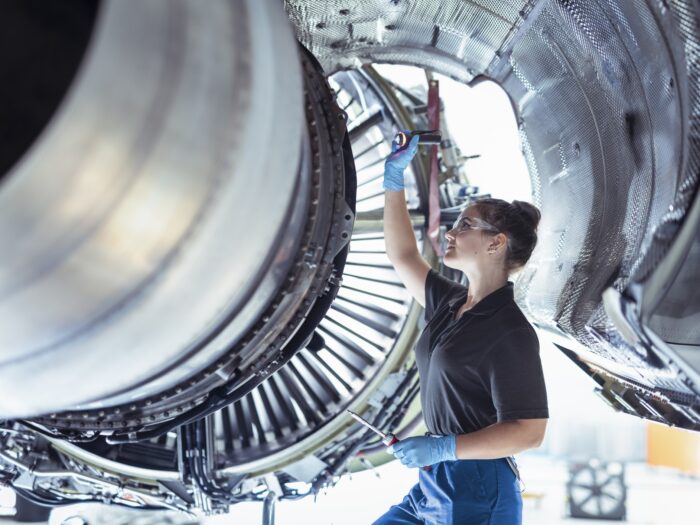Top Aviation Claims: Crashes, Defects, Natural Disasters

Collision/crash incidents, faulty workmanship, and natural catastrophes are the leading causes of aviation insurance claims, according to an analysis by Allianz Commercial, with rising repair costs and labor challenges driving up claims costs.
Collision and crash incidents are by far the leading cause of aviation insurance claims globally, accounting for nearly two-thirds (63%) of the value of claims over the past five years, according to an analysis of more than 30,000 industry claims worth $15 billion. By number of claims, collision/crash incidents represent one-third (33%) of all aviation claims.
While major crashes garner the most attention, this category also includes less severe but more frequent events such as hard landings, bird strikes, and incidents on the runway, the report explains. Runway excursions, when an aircrafts veers off or overruns the runway, are trending higher in 2024, with at least 23 incidents reported globally from January through May, compared to 38 in total in 2023, the report noted. Most claims of this type involve aircraft hull damage.
The second leading cause of aviation claims is faulty workmanship or defective products, which represents 22% of claims by value and 13% by number over the past five years. This points to the critical importance of quality control and oversight in aircraft manufacturing and maintenance.
Rounding out the top three causes are natural catastrophes, including turbulence, which account for 4% of claims by value as well as 4% by number of claims. Travel issues, such as property damage, injuries, lost baggage and stolen goods, represent 8% of claims by number and 1% by value. Other notable causes by value include machinery breakdown (including engine failure), 3%, fire and slip and fall incidents (each accounting for 1%).
The rising cost of aircraft repairs due to higher labor rates and spare parts prices is also having an impact, resulting in more aircraft being declared total constructive losses, the report stated.
Aviation Insurance Outlook
The aviation insurance market is set to reach new heights in 2024, with gross written premiums expected to surpass $8 billion, marking a 20-year high, according to Allianz Commercial.
“The aviation market is in an interesting and possibly unprecedented place with the traditional market cycle having been interrupted by the impact of the pandemic and wars,” stated Tom Fadden, global head of aviation at Allianz Commercial. “We see a growing interest in multinational insurance, and more enquiries for international insurance placements for entire programs across lines of business, driven by increasing geopolitical and regulatory concerns and a desire from clients for a highly managed insurance structure. Yet dark clouds continue to hover for insurers with well-publicized losses and inflation pressurizing bottom lines.”
General Aviation will supply the lion’s share of 2024’s premium volume, generating approximately 47% of the total; Airlines will provide approximately 35%, Aerospace 14%; and Contingent around 4%, the report stated. The standalone war market for aviation risks accounts for roughly 13% of this anticipated premium (or $1.1 billion), a significant increase from 2021 when it accounted for just 4% of global aviation GWP.
The standalone war market is also experiencing significant growth, as geopolitical and regulatory concerns drive the demand for highly-managed insurance structures. Multinational and international insurance placements are becoming more common, reflecting the evolving needs of the aviation industry in an increasingly complex global landscape.
“The world of aviation insurance might face the largest accumulated loss in all of its history from the Russian confiscation of several hundred aircrafts owned by big Western aircraft lessors, in the wake of its invasion of Ukraine,” the report’s authors stated. “So called contingent lessor policies insure
aircraft lessors against their financial interest in the aircrafts that they lease out to airlines. Many markets, which were writing these policies, now find themselves in a difficult situation.”
Allianz exited this segment in 2019 after it concluded that accumulation risk could not be controlled effectively, the report noted.
Key Trends Driving Up Claims Costs
The aviation insurance industry is seeing a shift in attritional claims stemming from hard landings, bird strikes, runway incidents, and ground handling incidents at large airports.
There has been a significant increase in aircraft repair costs in recent years, driven by higher labor rates and the cost of aircraft parts, among other factors, such as inflation, according to the report.
A shift to next generation aircraft continues to impact claims, especially when it comes to engine disassembly and repair costs. For example, repairs on the composite Boeing 787 aircraft, which have weeks-long timescales for repair development are now roughly four times more expensive than the same repairs would have been on metal aircraft, stated Mike Nicholls, senior aviation claims expert, UK, Allianz Commercial.
A growing shortage of aircraft mechanics may impact future claims activity. It may take longer to complete repairs if vendors lack manpower, or efficiency. Plus, a greater share of less-experienced mechanics on the line could mean they do not have the ability to repair a part, meaning it will need to be replaced with a new one, which typically is more costly.
Other Notable Developments
- GPS spoofing and jamming on the rise: As geopolitical tensions have heightened around the world, the aviation industry has experienced a significant increase in Global Positioning System (GPS) spoofing and jamming incidents. The average number of events in the first quarter of 2024 was 40% higher than in the same period last year. False GPS signals have been known to trick aircraft flight management systems into indicating that the aircraft is miles off-track, raising concerns about the potential impact on aviation safety. Most reported attacks have originated from Eastern Europe, the Middle East, and the Black Sea region, with incidents escalating since the onset of Russia’s invasion of Ukraine, according to the report.
- Helicopter sightseeing trips impact claims activity: The growing popularity of helicopter sightseeing trips and getaways, such as “heli-skiing,” has led to an increase in claims activity. While this trend is primarily observed in North America, cases have also been reported in Europe and Asia. Incidents involving crashes, hull damage, and injury have been associated with these helicopter excursions, the report noted.
- eVTOL aircraft coming soon: Electric vertical takeoff and landing (eVTOL) aircraft will soon be in our skies, transforming modern day flight with several different uses, the report says. These eco-friendly aircraft, which can be used to transport passengers or cargo, are expected to result in some of the first insurance placements for these aircraft this year, Allianz Commercial noted.
To view the full report, visit Allianz website. &










